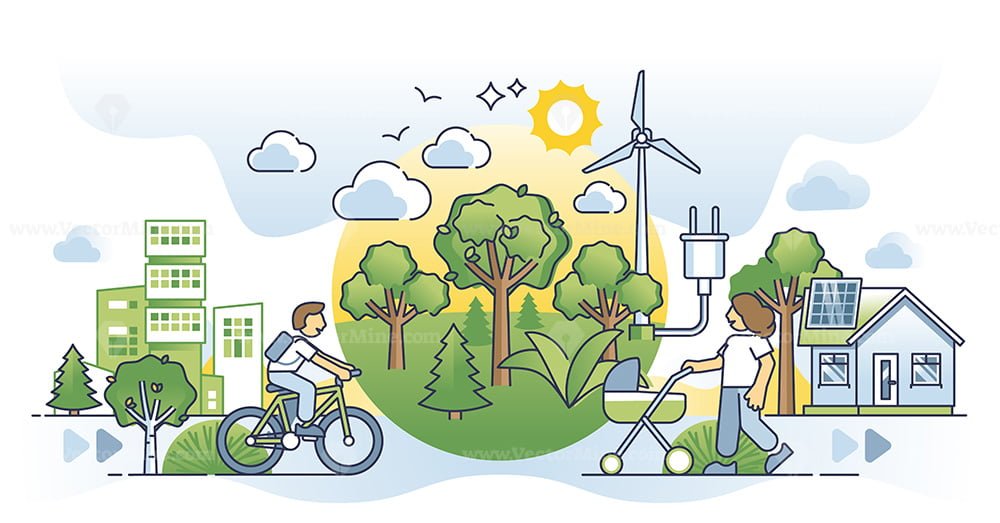<!-
- wp:paragraph –>
Climate change refers to long-term alterations in temperature and weather patterns, significantly influenced by human activities. The global impact of climate change is profound, affecting ecosystems, weather systems, and human livelihoods. Understanding the connection between human actions and the acceleration of climate change is crucial for developing effective strategies to mitigate its effects.
The Science Behind Climate Change
- Greenhouse Effect: The greenhouse effect is a natural process that warms the Earth’s surface. It occurs when the Sun’s energy reaches the Earth, and some of this energy is reflected back to space while the rest is absorbed and re-radiated by greenhouse gases (GHGs) in the atmosphere. This process is vital for maintaining temperatures conducive to life on Earth.
- Human Impact on the Greenhouse Effect: Human activities, particularly since the Industrial Revolution, have intensified the greenhouse effect by increasing GHG concentrations in the atmosphere. The burning of fossil fuels releases significant amounts of carbon dioxide (CO₂), methane (CH₄), and nitrous oxide (N₂O), leading to enhanced warming.
- Key GHGs:
- Carbon Dioxide (CO₂): Primarily emitted through fossil fuel combustion.
- Methane (CH₄): Released during livestock digestion and from landfills.
- Nitrous Oxide (N₂O): Emitted from agricultural practices and fossil fuel combustion.
Main Human Activities Contributing to Climate Change
- Burning Fossil Fuels:
- Transportation: Vehicles powered by gasoline and diesel contribute significantly to CO₂ emissions.
- Electricity Generation: Power plants burning coal, oil, and natural gas are major sources of GHG emissions.
- Industry: Manufacturing processes release CO₂ and other pollutants.
- Deforestation:
- Forests act as carbon sinks, absorbing CO₂. Large-scale deforestation for agriculture or urban development reduces this capacity, releasing stored carbon back into the atmosphere.
- Agriculture and Livestock Farming:
- Livestock farming, particularly cattle, produces large amounts of methane. Industrial farming practices also release nitrous oxide and CO₂.
- Waste Generation:
- Organic waste decomposition in landfills generates methane. Excessive plastic production exacerbates pollution issues.
Consequences of Human-Induced Climate Change
- Rising Global Temperatures: Increased GHG emissions lead to higher average global temperatures.
- Melting Ice Caps and Rising Sea Levels: Melting glaciers contribute to rising sea levels, threatening coastal communities.
- More Frequent and Severe Weather Events: Climate change increases the intensity of hurricanes, heatwaves, droughts, and wildfires.
- Impact on Ecosystems and Biodiversity: Wildlife habitats are threatened, leading to species extinction.
- Human Health and Social Impacts: Climate change exacerbates health issues such as respiratory diseases and increases displacement due to rising sea levels.
The Role of Industrialization and Consumerism
- Industrial Revolution: Marked a significant increase in CO₂ emissions due to mass production reliant on fossil fuels.
- Globalization and Consumer Culture: Heightened demand for goods leads to resource depletion, deforestation, and waste generation.
- Developed vs. Developing Nations: Developed countries have historically contributed more to climate change; however, emerging economies are now significant contributors due to rapid industrialization.
Potential Solutions to Human-Induced Climate Change
- Transition to Renewable Energy: Shifting from fossil fuels to renewable energy sources like solar, wind, and hydropower can significantly reduce emissions.
- Sustainable Agriculture: Implementing practices that minimize methane and carbon emissions can help mitigate climate change impacts.
- Reforestation and Conservation: Protecting existing forests and restoring ecosystems can enhance carbon absorption capabilities.
- Reducing Carbon Footprint: Encouraging sustainable consumption habits among individuals and industries can contribute to lower emissions.
Frequently Asked Questions (FAQs)
- How much of climate change is due to human activities?
- Can reversing deforestation significantly slow down climate change?
- Are some industries more responsible for climate change than others?
- How do individual actions contribute to global climate change?
- What role does government policy play in addressing human-induced climate change?
Conclusion
Human activities such as fossil fuel consumption, deforestation, and industrial agriculture are primary contributors to climate change. It is urgent for individuals, governments, and industries to collaborate in reducing emissions, transitioning to renewable energy sources, and protecting our environment for future generations. Collective action is essential in mitigating the effects of climate change and ensuring a sustainable planet.

Kyle Whyte is a notable scholar and professor at the University of Michigan, holding positions such as the George Willis Pack Professor in the School for Environment and Sustainability and Professor of Philosophy. Specializing in environmental justice, his work critically examines climate policy and Indigenous peoples’ ethics, emphasizing the nexus between cooperative scientific endeavors and Indigenous justice. As an enrolled Citizen Potawatomi Nation member, he brings a vital perspective to his roles as a U.S. Science Envoy and member of the White House Environmental Justice Advisory Council. His influential research is supported by various prestigious organizations including the National Science Foundation, and disseminated through publications in high-impact journals. Kyle actively contributes to global Indigenous research methodologies and education, with affiliations to numerous institutes and societies dedicated to traditional knowledge and sustainability. Recognized for his academic and community engagement, Kyle has earned multiple awards and served in various visiting professorships. His efforts extend to leadership positions on boards and committees focused on environmental justice nationwide.
